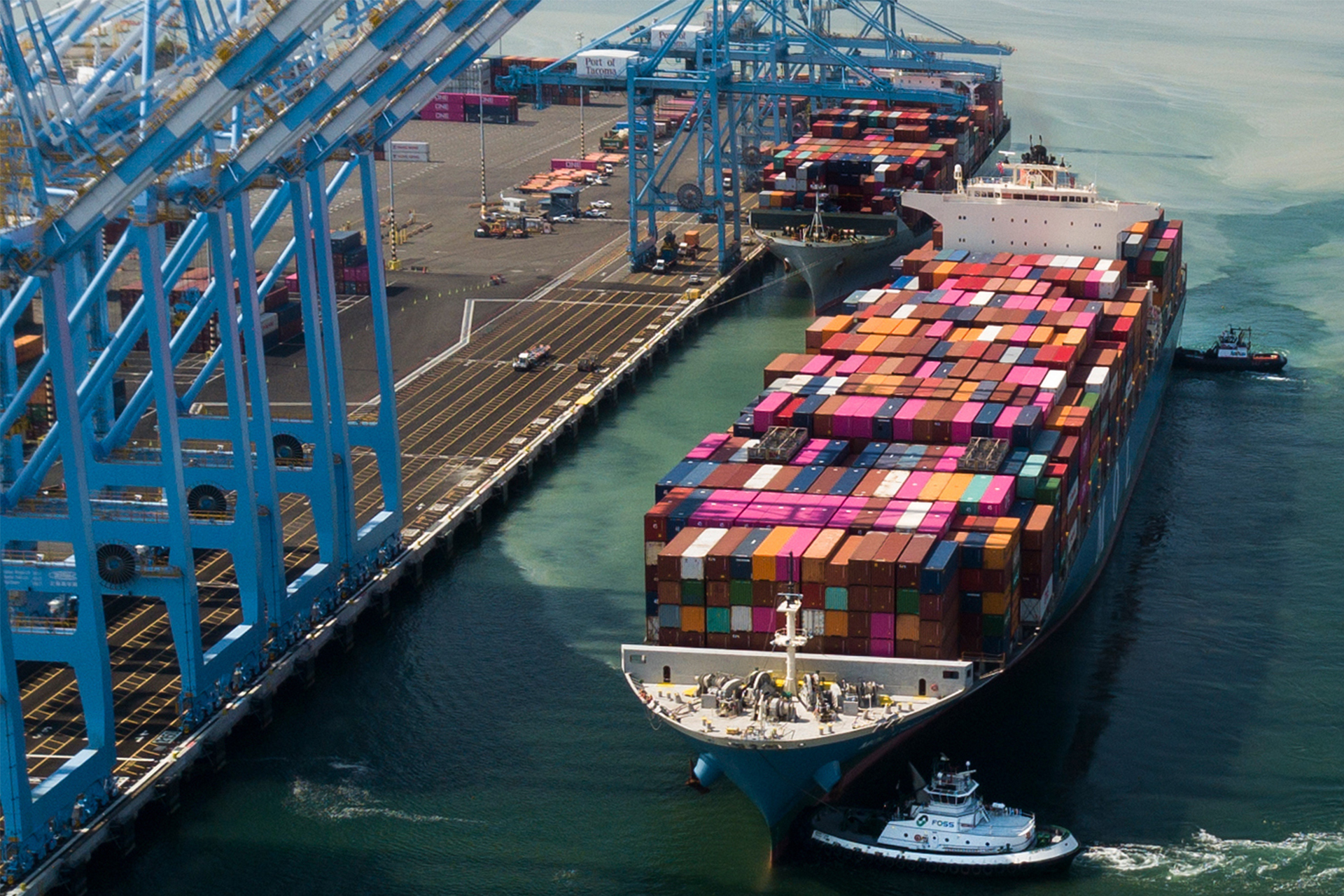Imports at the nation’s major container ports should continue at elevated levels this month after a strike that briefly shut down docks in East and Gulf Coast facilities, according to the Global Port Tracker report released today by the National Retail Federation and Hackett Associates.
The strike by members of the International Longshoremen’s Association began on October 1 and lasted three days until it was suspended when the ILA and the United States Maritime Association reached an agreement on the wage part of their negotiations. The suspension came with a short-term contract extension until January 15 as the parties work out other issues, with automation looming as the most pressing.
Ports handled unusually large volumes of cargo this past spring as importers brought in goods early because of the potential for a strike and shifted some vessels to the West Coast, where dockworkers are represented by a different union, NRF noted. At least some observers expect port volumes will remain high as importers consider the chances of a strike resumption in January.
U.S. ports covered by Global Port Tracker handled 2.34 million Twenty-Foot Equivalent Units, one 20-foot container or its equivalent, in August, up 0.9% from July and up 19.3% year over year for the highest volume since the record of 2.4 million TEU set in May 2022. The figure includes final numbers from tracked ports, except for New York/New Jersey and Miami, which have not yet released their monthly tallies. Figures from those facilities are estimates.
Ports have yet to report September’s numbers, but Port Tracker projects volume for the month come in at 2.29 million TEU, up 12.9% year over year. The organization forecasts October volume to come in at 2.12 million TEU, up 3.1% year over year, slightly higher than the 2.08 million TEU forecast for October a month ago. Port Tracker anticipates November volume reaching 1.91 million TEU, up 0.9% year over year, and December reaching 1.88 million TEU, up 0.2%. The figures realized and forecast would bring 2024 U.S. cargo volume to 24.9 million TEU, up 12.1% from 2023. Port Tracker forecasts January 2025 volume to reach 1.98 million TEU, up 0.8% year over year, but February 2025 volume declining to 1.74 million TEU, down 11.2% because of fluctuations in the timing of Lunar New Year shutdowns at Asian factories.
“It was a huge relief for retailers, their customers and the nation’s economy that the strike was short-lived,” said Jonathan Gold, NRF vice president for supply chain and customs policy. “It will take the affected ports a couple of weeks to recover, but we can rest assured that all ports across the country will be working hard to meet demand, and no impact on the holiday shopping season is expected. The strike wasn’t without impacts: Retailers who brought in cargo early or shifted delivery to the West Coast face added warehousing and transportation costs. But the priority now is for both parties to negotiate in good faith and reach a long-term contract before the short-term extension ends in mid-January. We don’t want to face a disruption like this all over again.”
Hackett Associates Founder Ben Hackett added, “The surge in imports over the past few months has clearly been the result of contingency imports by wholesalers, retailers, and industrial companies in anticipation of the East and Gulf Coast port strike rather than a sudden increase in demand. We may see some short-term congestion on the West Coast but nothing significant, and East Coast delays should be limited.”
Global Port Tracker, produced for NRF by Hackett Associates, provides historical data and forecasts for the U.S. ports of Los Angeles/Long Beach, Oakland, Seattle and Tacoma on the West Coast, New York/New Jersey, Port of Virginia, Charleston, Savannah, Port Everglades, Miami and Jacksonville on the East Coast, and Houston on the Gulf Coast.





